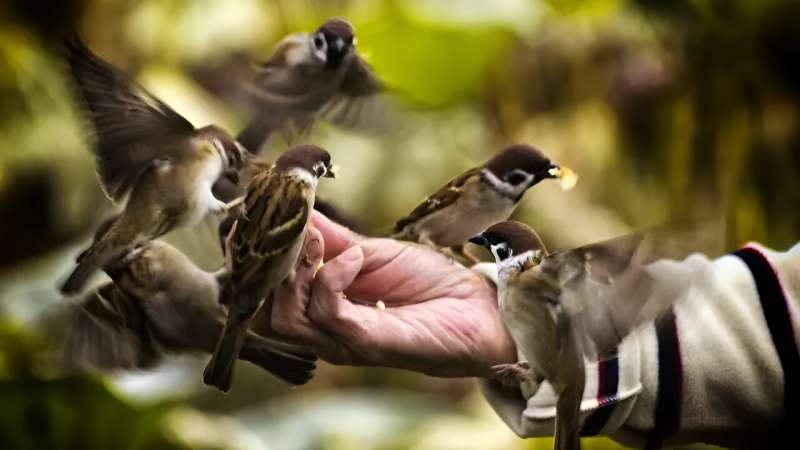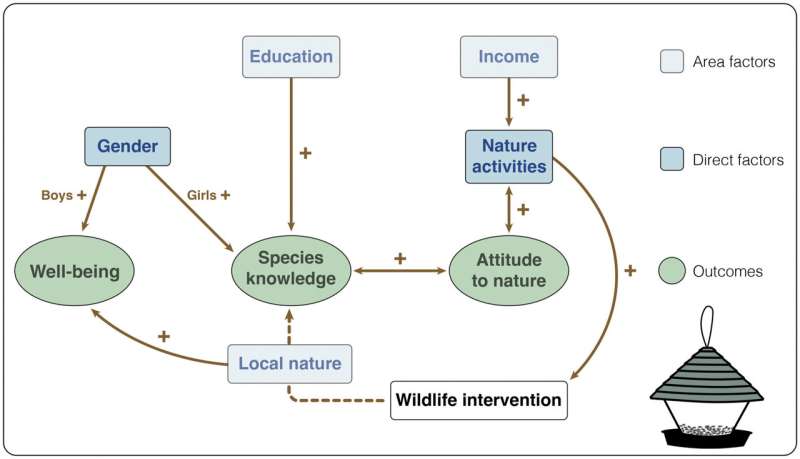
The income and education levels of a child’s environment determine their relationship to nature, not whether they live in a city or the countryside. This is the finding of a new study published in People and Nature and conducted by researchers at Lund University, Sweden. The results run counter to the assumption that growing up in the countryside automatically increases our connection to nature, and yet the study also shows that nature close to home increases children’s well-being.
There is a general concern that, with urbanization, people have lost contact with nature. According to research, less contact means lower engagement with nature and poorer health outcomes as people spend less time outdoors. How we might strengthen or rediscover our connection to nature is therefore a topical question. This is particularly important for children, partly because of the impact on their health, but also because it is in childhood that our relationships with nature are formed.
The researchers wanted to study the relationships urban and rural schoolchildren have to nature and whether these vary with socioeconomic status. They also wanted to look into whether feeding birds could serve as a point of contact with wildlife, potentially strengthening children’s knowledge of and feeling for nature, and by extension, improving their sense of well-being.
“Contrary to expectations, we have shown that children’s relationships with nature are not determined by whether they grow up in the countryside or in the city. Instead, socioeconomic factors play a decisive role. For example, children in areas with higher levels of education generally had better species knowledge, which in turn was linked to more positive attitudes towards wildlife.
“Higher incomes are linked to children participating more in nature-based activities, which also leads to a better connection to nature. This was true regardless of whether the children lived in a city center or in the countryside,” says Dr. Johan Kjellberg Jensen, researcher at Lund University, who led the study.
The study did find some differences between urban and rural children, however.
“It appears that children use natural environments in different ways, but this does not affect their attitudes towards nature in general. We could also see that children who have more direct access to nature close to home report a higher self-perceived sense of well-being. This shows how important contact with nature really is,” Dr. Jensen says.

What was the outcome of the bird feeding project? The researchers from Lund found that children’s species knowledge increased, but they saw no effect on well-being or attitudes to nature.
“That said, we saw a very wide variation in results between schools, which points to the important role of teachers and schools in projects like this. We already know that our contact with nature is shaped through social interactions and that adults have considerable responsibility in acting as role models for how children relate to nature,” says Dr. Jensen, who also points out that this does not necessarily have to fall to teachers, who already have considerable responsibilities.
Another key finding of the study was that children with little access to nature close to home benefited most from the bird feeding project.
“This highlights the importance of green and equitable housing policies and urban planning. If we want future generations to have positive relationships with nature, enjoying all the health benefits that come with that, we may need targeted projects to increase children’s contact with nature, both in urban and rural settings. This is particularly important in areas of low socioeconomic levels and little nature near residential housing,” Dr. Jensen concludes.
Previous studies have highlighted feeding birds as a potential way to strengthen the human-nature connection. The researchers from Lund University wanted to investigate more closely how factors such as urbanization might modulate this.
The researchers asked children aged 10–11 from 14 schools in southern Sweden to feed and count birds in their school playgrounds over three weeks. The children lived in the cities of Lund, Malmö and Helsingborg, as well as the surrounding countryside. The researchers measured the children’s species knowledge, sense of well-being and connection to nature before and after the period of feeding.
The researchers then cross-referenced the responses they received with data on education and income levels locally, the amount of nature nearby, the children’s other nature-based activities, and whether they lived in a rural or urban area.
With its 350,000 inhabitants, Malmö was the largest city included in the study. The researchers highlight that the results may have been different if they had conducted their study in a city of several million inhabitants where it can be harder to travel outside the city to experience nature.
More information:
Johan Kjellberg Jensen et al, Reconnecting children to nature: The efficacy of a wildlife intervention depends on local nature and socio‐economic context, but not on urbanisation, People and Nature (2024). DOI: 10.1002/pan3.10702
Citation:
Socioeconomics found to shape children’s connection to nature more than where they live (2024, August 23)
retrieved 23 August 2024
from https://phys.org/news/2024-08-socioeconomics-children-nature.html
This document is subject to copyright. Apart from any fair dealing for the purpose of private study or research, no
part may be reproduced without the written permission. The content is provided for information purposes only.

